This is my first runestone that was based off the Uppland Sweden standing runestones. It’s based off of one that I can’t find online, but is in the Dover press ‘Viking Designs’ book, and I can find the rest of the ones on the page, so I’m assuming it’s just not digitized yet. If it does not actually exist, it’s at least very much in keeping with the style, so I feel it’s ‘close enough’.
Here’s the finished scroll –
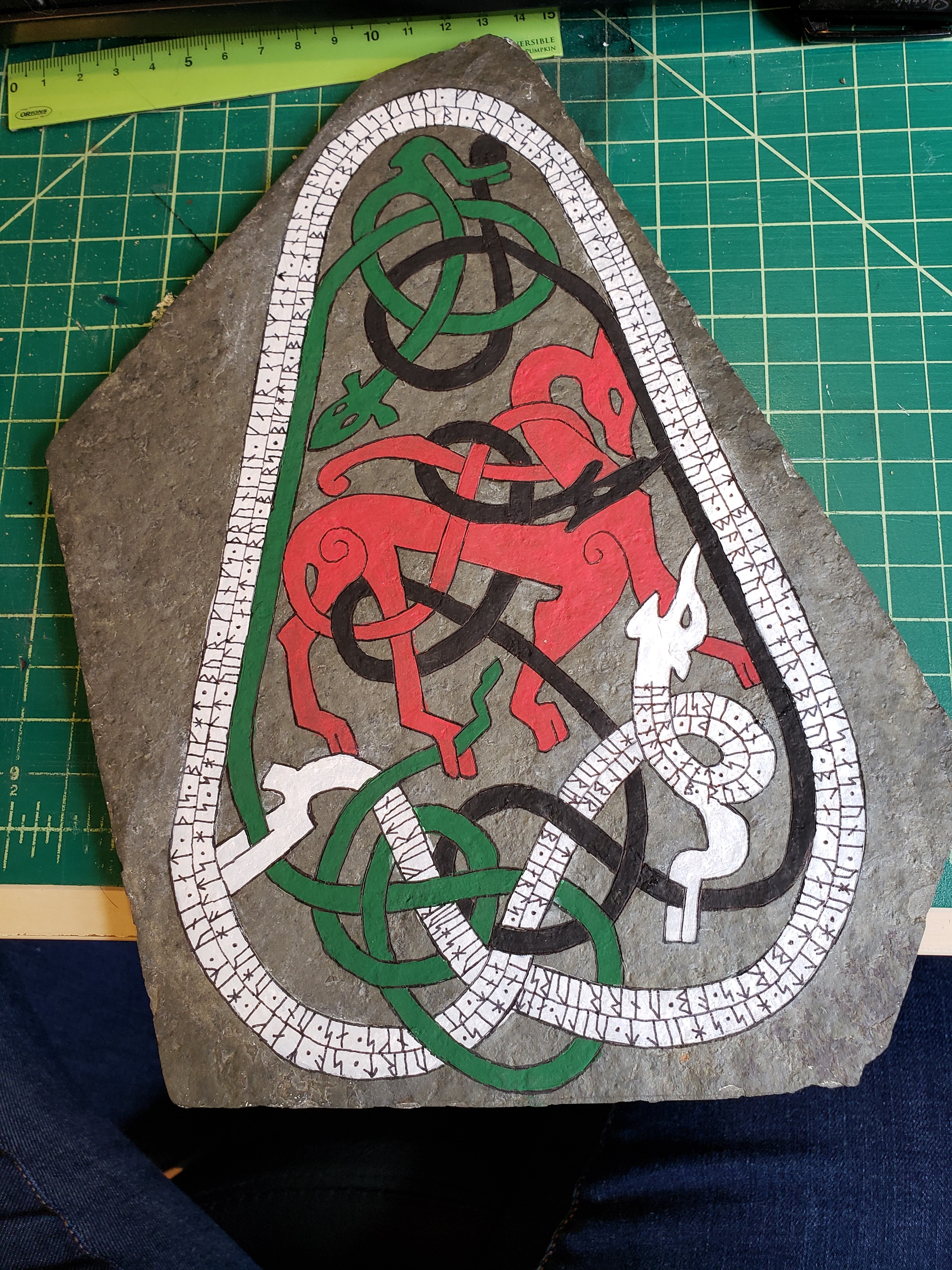
Now to tell the story…
The award write up I received, told of a brave viking warrior who has joined our society in the last year or so, and has made every effort to better himself in the art of war. It was suggested that he would enjoy a scroll with runes on it, which immediately my mind went to carving him a stone.
I passed the award recommendation to fellow Silver Brooch Sisuile Butler who had told me a few weeks earlier that she loved writing words. (Music to the ears of most scribes!) While she worked on the words, I got to work on the stone.
I had planned to raid the stash of flagstones that Leanne and I had bought a few years ago for such projects, but due to scheduling and such, it was easier to just go get another batch of them from Home Depot. (Plus, now I have my own stash, just what my scribal closet needed…) So one of the many rainy days of April, I went over to the local Home Depot and grabbed two bags of soaking wet stones. Had the weather or light been better, I’d have picked out the perfect set, but given the conditions, I went with two sets and hoped for the best. Once home I set out all the stones I had acquired and found one that would stand up on one side and look about right for the job.
Then I started researching which design I wanted to put on the stone. My initial goal was a man fighting monsters, but the people on these stones are pretty strange looking and few and far between, so I had to go with creatures fighting creatures. While browsing through “Viking Designs” I found one that matched what I was looking for:
I then spent a few days trying to find which stone this design is from, but eventually gave up.
Next was the challenge of how to transfer the complex design to the stone. I had originally planned to freehand the design, but since this was more complex, I decided to transfer it onto the stone. I did a few trials using various chalk and carbon methods but they wouldn’t stay on the stone or didn’t show up well enough. I eventually found an article on the web suggesting that you paint the surface and then transfer the design to the surface, then carve the design onto the stone, so I tried this on a piece of scrap stone and it worked wonderfully!
So I painted the stone white, and transferred the design using homemade carbon paper, this didn’t leave dark enough lines, so I went back over all the lines with a pencil. I then inscribed the lines on the stone using a knife. It was difficult to see which lines I had already inscribed, so I used an orange marker to keep track. Once all the lines were done, I washed the stone with soap and water. While waiting for it to dry, I tested the colors I had to see which would look best on the different lines. The colors were chosen as they are similar to colors that the original artists would have had access to, and what has been found in archaeological investigations of the stones. I transliterated the text from English characters into Younger Futhark Runes and wrote it onto the stone in two lines, since there were many more characters than would fit in one line. I cleaned up the edges with a pointed q-tip and called my courier to come and get it, as I was not going to the event this time.
I hope one day I will have time to actually carve the stone, I did a trial of it for this project but I didn’t have enough time to really do it well, so I decided to just go with the paint, but I do now know that I have the tools to actually hand carve the entire thing.



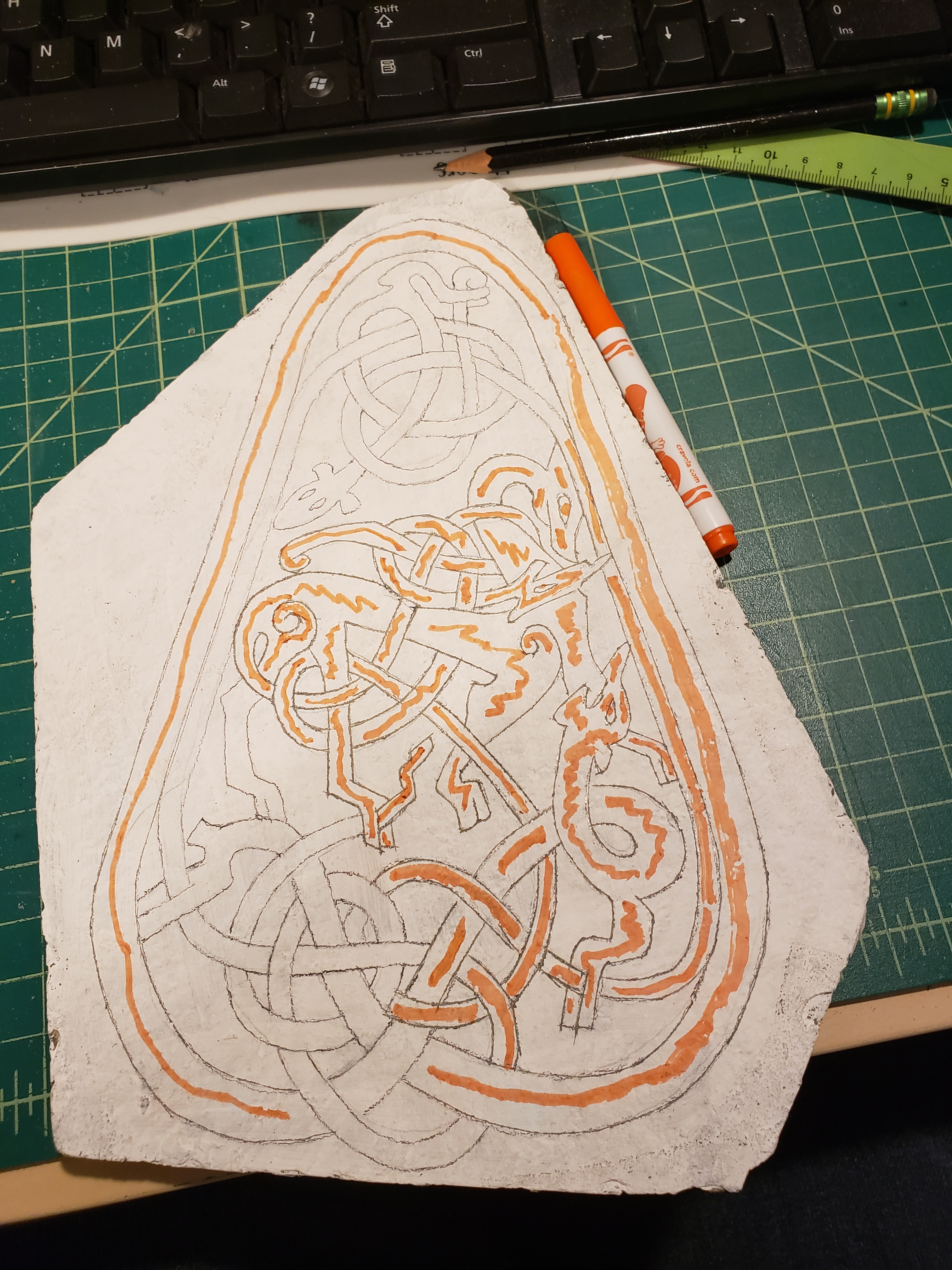
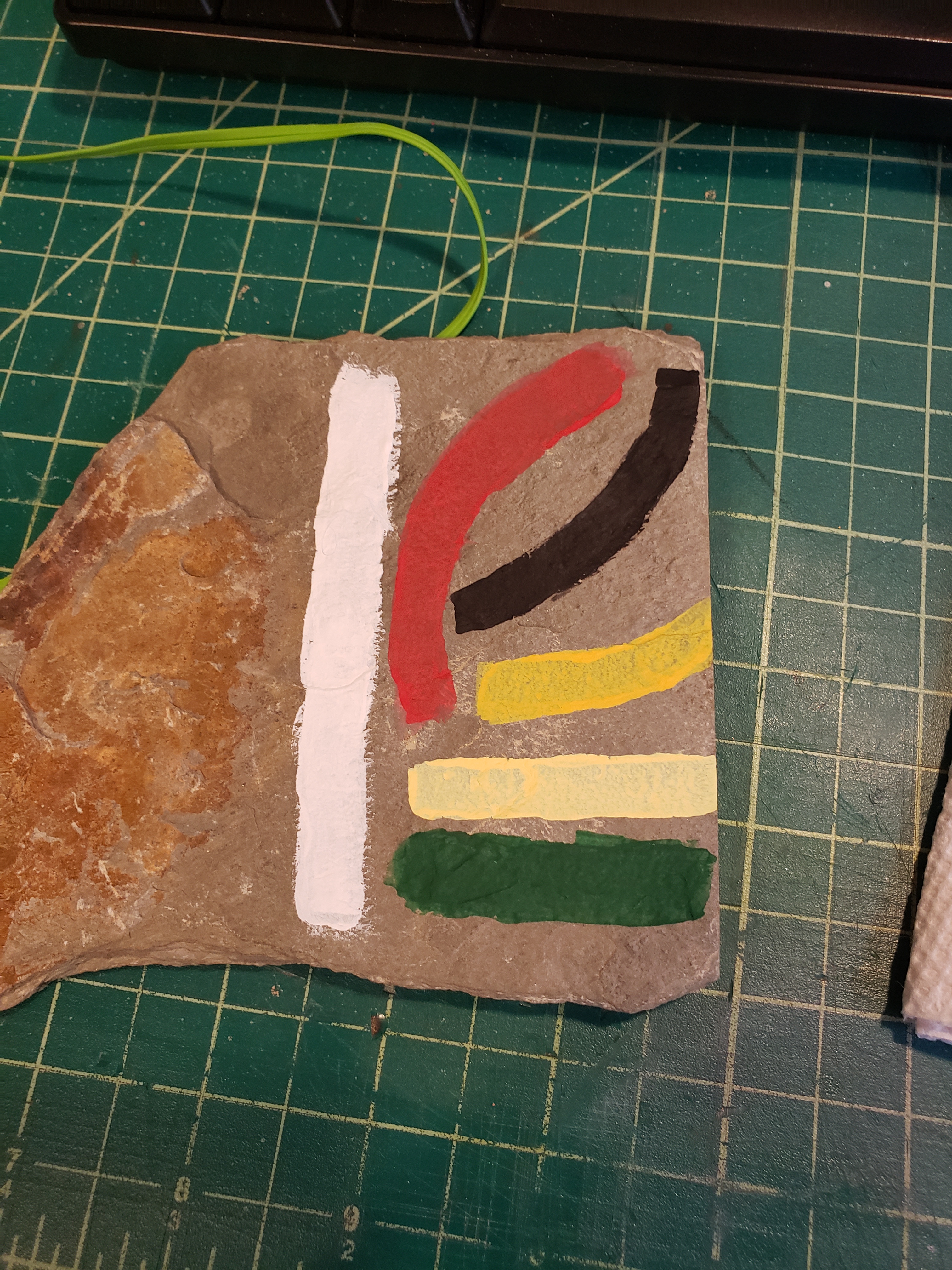
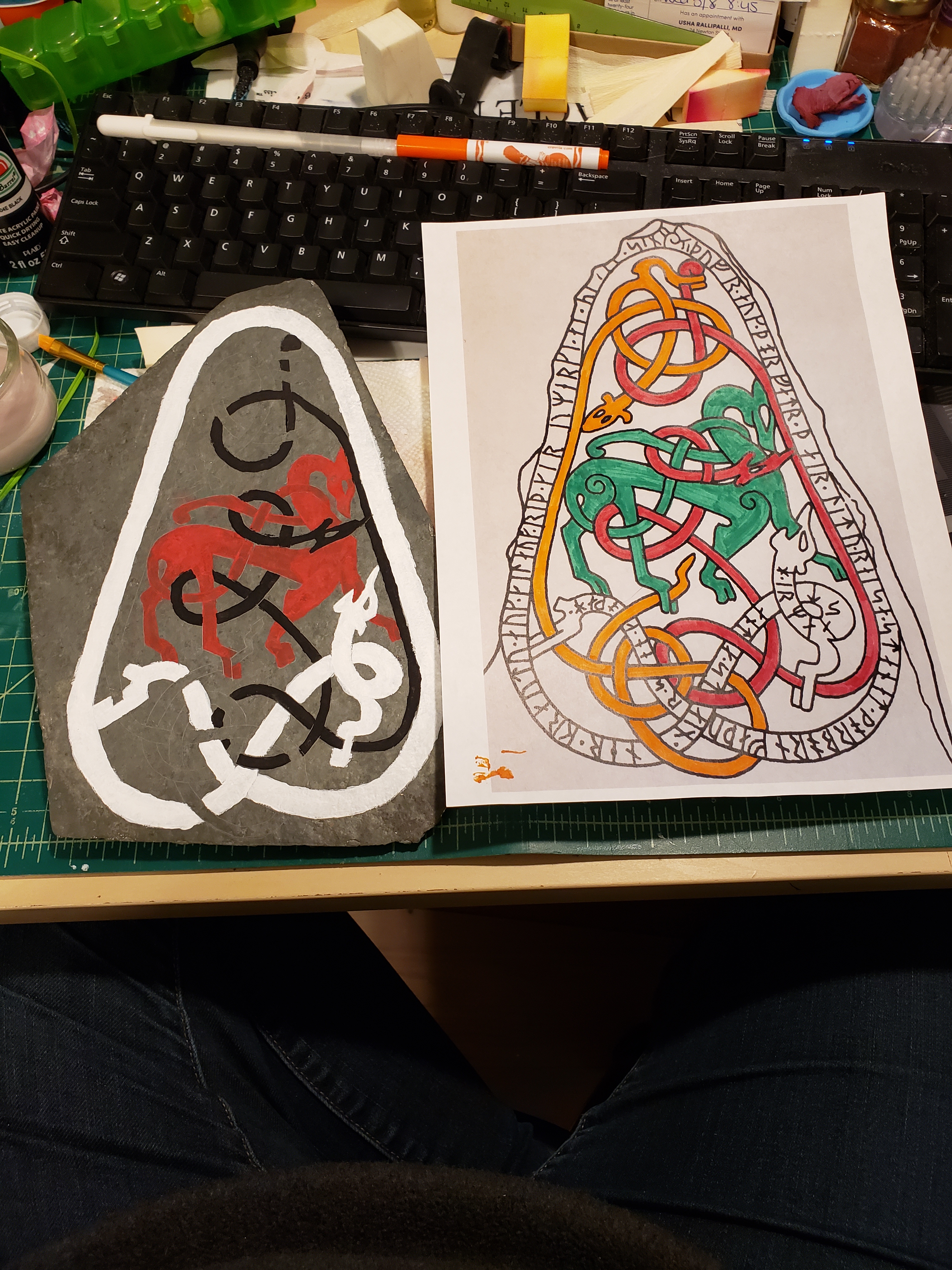



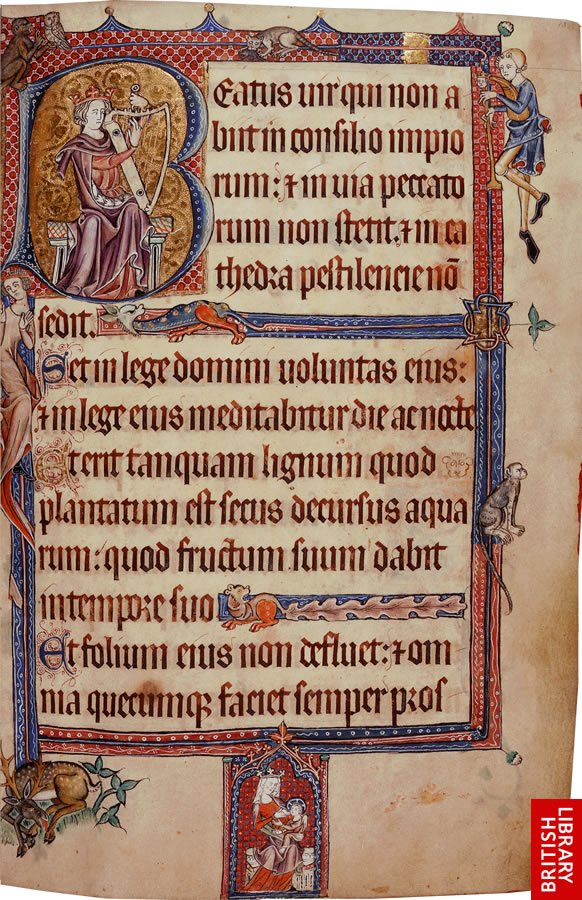
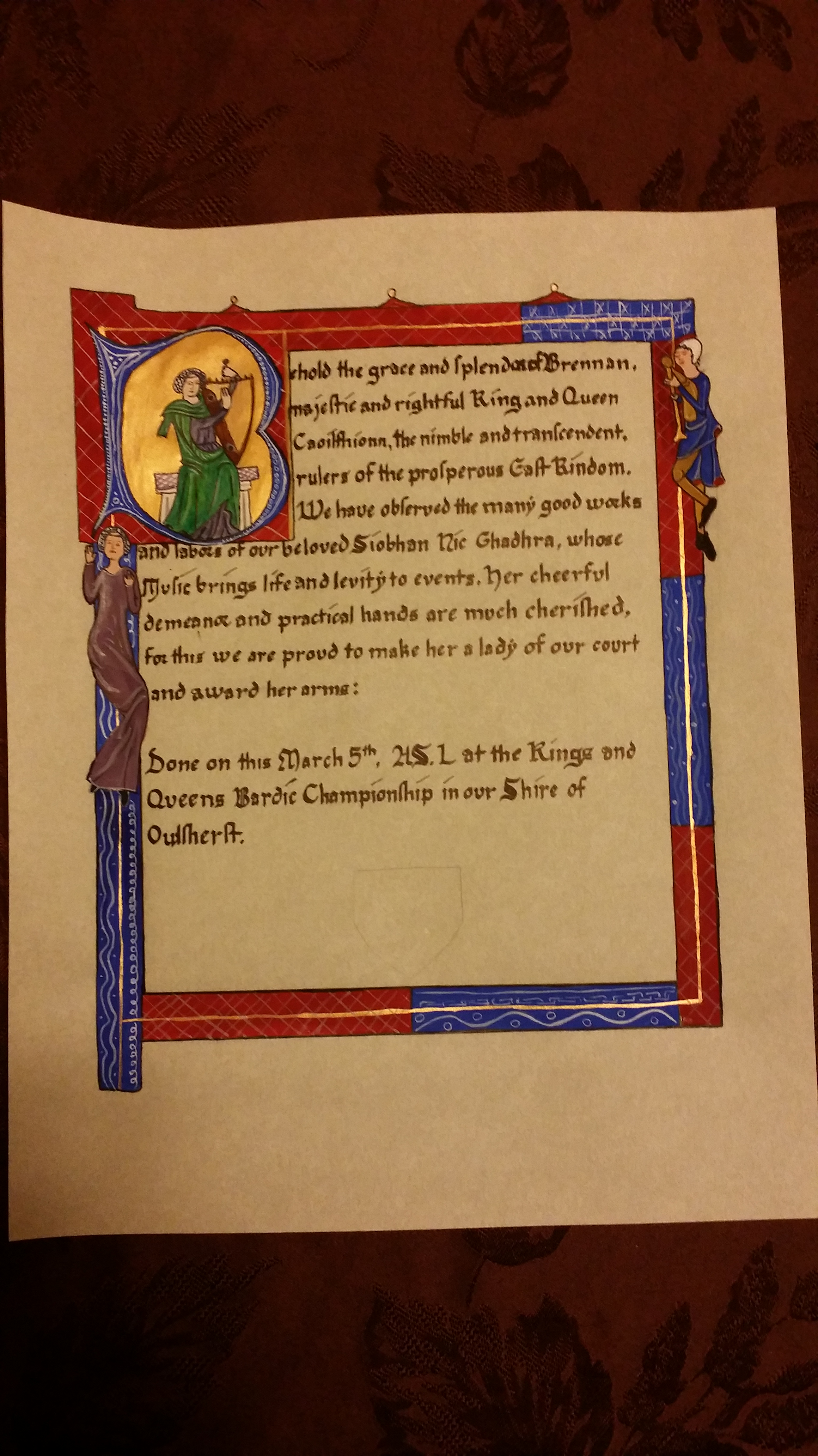








 removing the extra material.
removing the extra material. 













 Once I had all my holes drilled I cut my pegs and sanded off their sharp splintery bits on the ends. And then I remembered I had 4 shuttles to cut and drill also, so I went back and did that and then sanded them to be not spiky. Though at some point I need to put an edge on each of them as they currently aren’t terribly effective beaters since they are blunt. But I’m curious if my design for how the string goes on will work better for me since I have a hard time keeping the string from falling off. Also man Maple is pretty.
Once I had all my holes drilled I cut my pegs and sanded off their sharp splintery bits on the ends. And then I remembered I had 4 shuttles to cut and drill also, so I went back and did that and then sanded them to be not spiky. Though at some point I need to put an edge on each of them as they currently aren’t terribly effective beaters since they are blunt. But I’m curious if my design for how the string goes on will work better for me since I have a hard time keeping the string from falling off. Also man Maple is pretty.




Recent comments